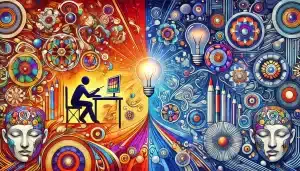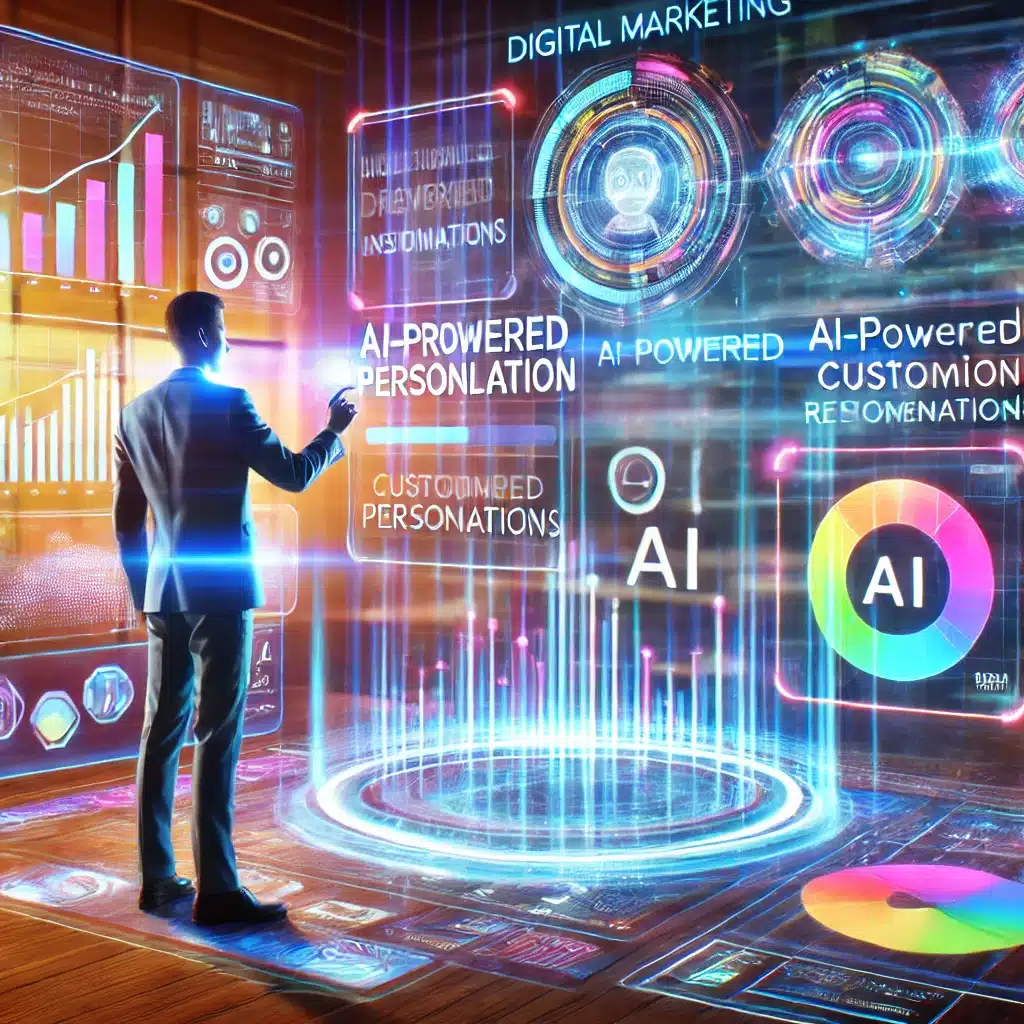In today’s rapidly evolving technological landscape, Generative AI is revolutionizing the way individuals and organizations approach creativity. Powered by advanced algorithms, tools like ChatGPT, GPT-4, and similar AI models are now capable of producing text, images, music, and more, transforming industries from marketing and entertainment to education and design. What once seemed like a futuristic concept has quickly become a part of daily life, offering endless possibilities for innovation and productivity.
This article explores the dual nature of generative AI—its power to amplify individual creativity and its limitations that could impact collective innovation. From understanding how it assists less creative individuals to examining its potential to homogenize ideas, we’ll delve into both sides of the debate. By the end, you’ll gain a deeper understanding of how generative AI can be harnessed responsibly to complement human ingenuity without compromising the uniqueness of creative expression.
The Creative Boost of Generative AI
Empowering the Creative Process
Generative AI serves as a powerful tool for sparking creativity. For individuals who experience creative blocks or lack inherent creative instincts, AI offers novel ideas and perspectives. According to a study detailed in The Guardian, participants who received AI-generated storytelling prompts exhibited higher novelty and usefulness in their stories. Participants in the study who used AI assistance saw an 8.1% increase in novelty and a 9% boost in usefulness, compared to their counterparts who relied solely on human effort.
This capability makes generative AI particularly valuable in industries where innovation and originality are paramount, such as marketing, design, and entertainment. Writers, for example, can break free from conventional thought patterns with AI-generated suggestions that challenge their assumptions and lead to fresh perspectives.
Generative AI as a Tool for Leveling the Creative Playing Field
The findings were confirmed by another study published in MIT Technology Review. This research delved deeper into how GPT-4 could help less creative writers produce higher-quality stories. The study found that 88.4% of participants opted to use the AI assistance when given the chance. As a result, less creative individuals produced stories that were deemed significantly more creative than they would have been without AI intervention. Thus, AI effectively “leveled the playing field,” offering a substantive aid to those who needed it most.
Personalized Ideas at Scale
One of AI’s greatest strengths is its ability to generate personalized content at scale. For instance, marketers can use AI tools to tailor advertisements to different demographics without compromising creativity. Similarly, educators can design unique learning materials for students based on individual needs and interests.
AI’s capability to learn from user input ensures that the suggestions it provides align with the goals and tone of the individual or organization. This flexibility makes it a valuable partner in collaborative creative processes.
The Downside: Homogenization
While the use of AI in creative writing can uplift individual creativity levels, an emerging concern is the homogenization of ideas. Both studies highlighted a similar downside: stories generated with AI assistance tended to be more similar to each other. Because generative AI models are trained on existing datasets, their output can often be predictable and lack the wild, unique ideas that come from human creativity. According to The Guardian, this uniformity raises questions about the long-term impact of AI on the diversity of creative works. A rich tapestry of unique, human-generated ideas might become more monotonous if heavily reliant on AI.
For instance, two users asking an AI for story ideas might receive variations of similar themes or tropes. Over time, this repetition could saturate industries with formulaic outputs, diminishing the richness of creative diversity.

Generative AI and Its Impact on Collective Creativity in Society
As the use of Generative AI becomes more widespread, ethical concerns surrounding its application in creative fields are gaining prominence. These issues include questions about authorship, originality, and the potential misuse of AI-generated content.
Authorship and Originality
Generative AI blurs the lines between human and machine creativity, raising questions about who deserves credit for AI-assisted work. For instance, if an AI generates a compelling story or piece of art, should the credit go to the individual using the AI or the developers of the AI itself? This ambiguity challenges traditional notions of authorship and originality in creative industries.
AI-Generated Plagiarism
Since Generative AI models are trained on pre-existing datasets, they may inadvertently replicate content without proper attribution. This raises concerns about intellectual property rights and the originality of AI-generated work. Businesses and individuals using AI must ensure that outputs do not violate copyright laws or ethical guidelines.
Impact on Creative Professionals
The increasing reliance on AI for creative tasks could potentially devalue human effort in these fields. For example, freelance writers, graphic designers, and other creative professionals may find it challenging to compete with AI systems capable of producing high-quality outputs quickly and at a lower cost. This shift could reshape the job market, necessitating policies and practices that protect creative professionals.
Moreover, MIT Technology Review elaborates on how the homogenizing effect of AI can also impact the collective output of creative works. Although people individually might benefit from AI’s assistance, the collective result could be a flattening of creativity across the board. This is a critical social dilemma, as emphasized by researchers: while AI can be individually beneficial, it may reduce the overall creative diversity in society.
This poses a dilemma for industries like literature, film, and art, where originality is a key differentiator. Striking a balance between AI-driven efficiency and authentic creativity will be essential to maintain the dynamic interplay of diverse ideas.
Ethical Implications of AI in Creativity
Ownership of Creative Work
Generative AI raises questions about intellectual property and authorship. If AI contributes significantly to a creative piece, who owns the rights to the work—the human collaborator or the entity that developed the AI? This gray area demands clearer legal frameworks to protect both human and AI contributions while ensuring fairness.
Bias in AI Creativity
Another concern is the inherent bias in AI-generated outputs. Since AI learns from historical data, it can perpetuate existing stereotypes or exclude marginalized voices. For instance, an AI trained on predominantly Western literature might struggle to produce culturally diverse narratives. Addressing these biases requires careful curation of training datasets and ongoing monitoring of AI behavior.
The Role of Human Oversight
To maximize the benefits of generative AI while mitigating its downsides, human oversight is crucial. AI should be viewed as a collaborative partner rather than a replacement for human creativity. For example, writers can use AI to brainstorm ideas but should refine and personalize the outputs to align with their unique voice and vision.
Additionally, organizations can establish guidelines for ethical AI use, ensuring that outputs are diverse, inclusive, and aligned with brand values.
The Future of Generative AI in Creativity
Enhancing, Not Replacing Creativity
As AI technology evolves, its role in creativity is likely to expand. Future models may incorporate real-time learning and emotional intelligence, enabling even more nuanced and context-aware suggestions. However, the goal should not be to replace human creativity but to enhance it.
Integrating AI into the Creative Workflow
Rather than viewing AI as a standalone tool, businesses and creators can integrate it into their workflows. For instance:
- Brainstorming: Use AI for generating a wide range of ideas during the ideation phase.
- Drafting: Employ AI to create initial drafts or frameworks, which can then be refined by humans.
- Optimization: Leverage AI analytics to test creative outputs and optimize them for specific audiences.
Conclusion
Generative AI is undeniably reshaping the creative landscape. Its ability to boost individual creativity and streamline content production offers immense potential for innovation. However, its limitations, such as the risk of homogenization and ethical concerns, must be carefully managed.
As we embrace the possibilities of generative AI, it is essential to maintain a balance that prioritizes diversity, originality, and ethical responsibility. By leveraging AI as a collaborative partner rather than a creative crutch, businesses and individuals can harness its power to enhance their creativity without compromising the unique essence of human imagination.
FAQs
- What is generative AI, and how does it enhance creativity?
Generative AI refers to advanced algorithms like GPT-4 and similar models that create text, images, music, or other forms of content based on the data they are trained on and the inputs they receive. It enhances creativity by acting as a brainstorming partner or an idea generator. For instance, a writer experiencing a creative block can use AI to generate unique story prompts or alternative plotlines. - Can generative AI replace human creativity?
No, generative AI cannot replace human creativity because it lacks the emotional depth, personal experiences, and cultural understanding that shape authentic human expression. While AI can generate impressive content, it is fundamentally rooted in the data it has been trained on, meaning it cannot innovate beyond existing patterns or ideas. Human creativity is unique in its ability to blend abstract thinking, emotional resonance, and diverse perspectives, resulting in art and ideas that provoke thought and inspire change. - What are the downsides of relying on generative AI?
Over-reliance on generative AI can lead to homogenized outputs, reduced diversity in creative works, and ethical concerns like biases in AI-generated content. - How can businesses use generative AI ethically?
Businesses can use generative AI ethically by ensuring transparency, addressing biases, and balancing AI-generated content with human oversight to maintain originality and inclusivity.



